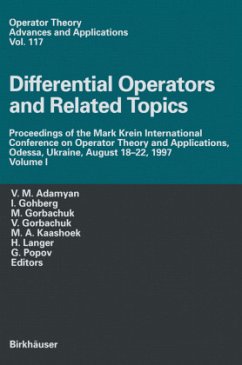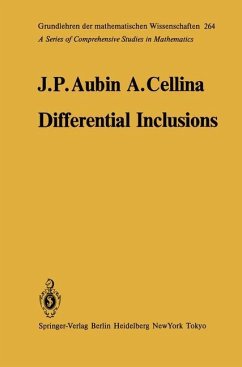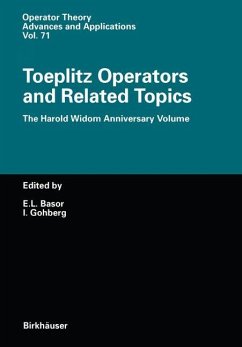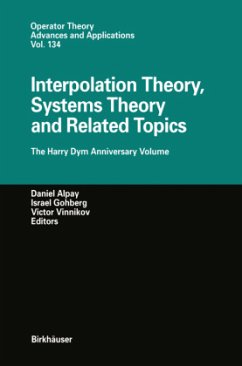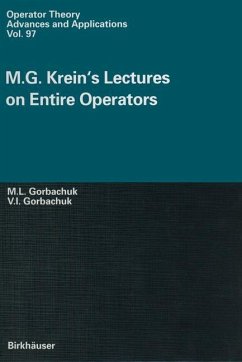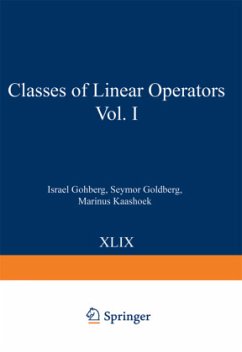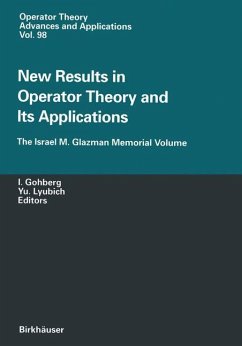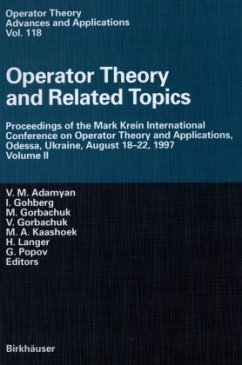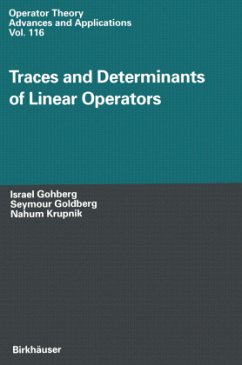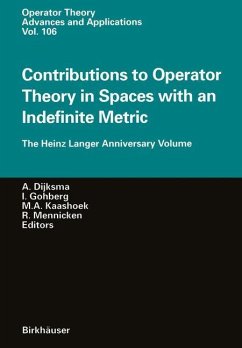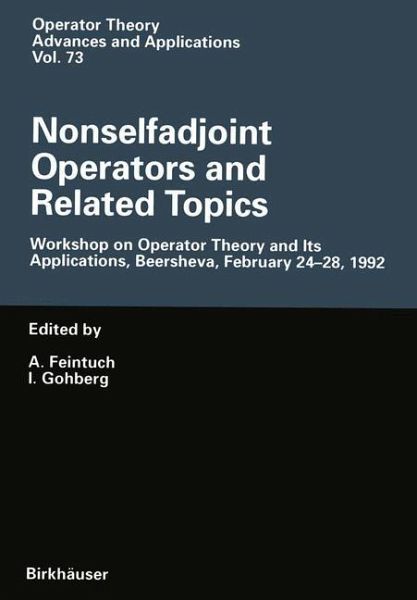
Nonselfadjoint Operators and Related Topics
Workshop on Operator Theory and Its Applications, Beersheva, February 24-28, 1992
Herausgegeben von Feintuch, A.; Gohberg, I.

PAYBACK Punkte
19 °P sammeln!
Our goal is to find Grabner bases for polynomials in four different sets of expressions: 1 x- , (1 - x)-1 (RESOL) X, 1 x- (1 - xy)-1 (EB) X, , y-1, (1-yx)-1 y, (1_y)-1 (1-x)-1 (preNF) (EB) plus and (1 - xy)1/2 (1 - yx )1/2 (NF) (preNF) plus and Most formulas in the theory of the Nagy-Foias operator model [NF] are polynomials in these expressions where x = T and y = T_. Complicated polynomials can often be simplified by applying "replacement rules". For example, the polynomial (1 - xy)-2 - 2xy(1-xy)-2 + xy2 (1 - xy)-2 -1 simplifies to O. This can be seen by three applications of the replacement...
Our goal is to find Grabner bases for polynomials in four different sets of expressions: 1 x- , (1 - x)-1 (RESOL) X, 1 x- (1 - xy)-1 (EB) X, , y-1, (1-yx)-1 y, (1_y)-1 (1-x)-1 (preNF) (EB) plus and (1 - xy)1/2 (1 - yx )1/2 (NF) (preNF) plus and Most formulas in the theory of the Nagy-Foias operator model [NF] are polynomials in these expressions where x = T and y = T_. Complicated polynomials can often be simplified by applying "replacement rules". For example, the polynomial (1 - xy)-2 - 2xy(1-xy)-2 + xy2 (1 - xy)-2 -1 simplifies to O. This can be seen by three applications of the replacement rule (1-xy) -1 xy -t (1 - xy)-1 -1 which is true because of the definition of (1-xy)-1. A replacement rule consists of a left hand side (LHS) and a right hand side (RHS). The LHS will always be a monomial. The RHS will be a polynomial whose terms are "simpler" (in a sense to be made precise) than the LHS. An expression is reduced by repeatedly replacing any occurrence of a LHS by the corresponding RHS. The monomials will be well-ordered, so the reduction procedure will terminate after finitely many steps. Our aim is to provide a list of substitution rules for the classes of expressions above. These rules, when implemented on a computer, provide an efficient automatic simplification process. We discuss and define the ordering on monomials later.





